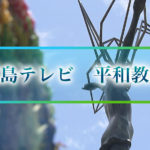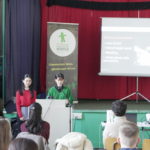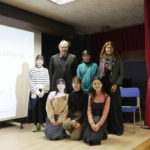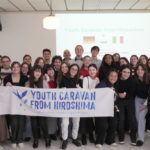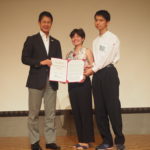II Period of High Economic Growth
1 From a Period of Adjustment to the Special Procurement of the Korean War
From 1948 to 1949, Japan faced a major turning point in its industrial economy. Planned, controlled economic policies were initially developed under the Allied occupation, but the “Dodge Line” was implemented in March 1949 following the announcement of the “Nine Principles for Economic Stabilization” in December 1948, calling for a balanced budget, and price and wage controls. There were policy changes in America, such as the introduction of a fixed exchange rate of 360 yen to the dollar the following April, gradually shifting to liberal policies. The “Dodge Line” implemented rapid financial restraints in order to curb abnormal inflation during that time, but this sent the entire country in a deep recession.
In 1948, the number of the unemployed in Japan was 240,000, but it rose to 380,000 in 1949 (58.3% increase), and to 440,000 in 1950 (15.8% increase) (Annual Report on the Labor Force Surveys, Ministry of Internal Affairs and Communications). According to the Monthly Report of Recent Economic and Financial Developments (issued in June 1949 by the Bank of Japan’s Hiroshima Branch), there were 3,466 worker layoffs at 122 companies in the prefecture from January to June. 14) On the other hand, inflation was steadily subsiding with the implementation of the “Dodge Line.” The Retail Price Index in Hiroshima City, compared to the previous years, had increased by 82.8% in 1947, and by 70.9% in 1948, but had slowed somewhat with a 17.4% increase in 1949; and in 1950, the Retail Price Index actually decreased by 17.0%.15)
With regard to the effects of these policies on Hiroshima Prefecture’s manufacturing sector, according to the Census of Manufactures (Table 6-3), although the number of establishments with four or more employees increased from 2,837 in 1948 to 3,029 in 1949, the number of employees dropped by 7.5%, from 113,581 to 105,095. (The number of employees at very small sized factories with less than four full-time employees remained roughly the same, going from 10,717 to 10,879). During the same period, the number of employees nationwide dropped by 7.7%. This resulted in a relative increase in Hiroshima Prefecture’s share in the total number of employees in the nation, from 3.09% in 1948 to 3.10% in 1949.
Table 6-3 Hiroshima Prefecture’s manufacturing industry and Hiroshima’s share in Japan (1949–1952)
| Actual numbers | Rate of changes (%) | |||||
| 1949 | 1950 | 1951 | 1952 | 1949-1950 | 1951-1952 | |
| Population (1,000 people) | 2,070 | 2,082 | 2,097 | 2,106 | 0.59 | 0.42 |
| No. of establishments | 3,029 | 3,812 | 4,338 | 4,294 | 25.85 | -1.01 |
| No. of employees | 105,095 | 108,427 | 117,394 | 117,996 | 3.17 | 0.51 |
| Shipments (1 million yen) | 34,285 | 51,509 | 92,000 | 103,619 | 50.24 | 12.63 |
| Population(%) | 2.53 | 2.50 | 2.48 | 2.45 | -0.03 | -0.03 |
| No. of establishments(%) | 2.79 | 2.44 | 2.61 | 2.55 | -0.35 | -0.05 |
| No. of employees(%) | 3.10 | 2.81 | 2.77 | 2.73 | -0.29 | -0.04 |
| Shipments(%) | 2.38 | 2.25 | 2.28 | 2.24 | -0.13 | -0.04 |
Notes: 1. The above chart uses the same source material as Table 6-1. The bottom column shows Hiroshima’s share nationally and its percentage in relation to the rate of nationwide change.
2. The survey expanded to include establishments with four or more full-time employees from 1949. The shipments are nominal values.
3. National figures do not include Okinawa Prefecture.
Research in recent years evaluates the “Dodge Line” as having functioned as a base for later Japanese economic development.16) However, at that time, the “Dodge Line” was severely criticized in Hiroshima as “being the sole cause of the rapid downturn of the regional economy due to its anachronism, running counter to the historic flow of economic policies,”17)
Either way, Japan’s industrial economy at the time should have outgrown its reliance on government demand and protectionist policies. In order to do so, structural adjustments were required; but before this could be completed effectively, the Korean War started―accompanied by a special procurement boom.
The Korean War, which erupted on June 25, 1950, came with a special procurement boom that “operated just like a fulcrum for economic recovery.”18) When using 1935 as the baseline for 100%, the Industrial Production Index was stagnant. It was 30% mark in 1946 and 1947; 50% mark in 1948; 60% mark in 1949; rose to 83.3% in 1950; and 111.1% in 1951―surpassing prewar levels. This special procurement had the effect of bringing Hiroshima back from the brink of disaster. Its effects were seen as early as the following July, and the following boom was “exalted as a reversal that transformed Hiroshima City’s moribund economy to one of prosperity.”19) Stimulated by the Korean War, Hiroshima’s industrial economy― and Japan’s―would later attain high economic growth.
2 Emergence of the “Productive Prefecture Plan”
Although Hiroshima Prefecture’s industrial economy somehow managed to recover and reconstruct itself, neither its growth rate nor its standards were high compared to the rest of Japan. With the Korean War, the number of employees in the manufacturing sector surpassed 110,000, and while the shipments was 34.3 billion yen in 1949, it rose to 51.5 billion yen in 1950, 92.0 billion yen in 1951, and 103.6 billion yen in 1952; the first time it reached the 100 billion-yen mark. Hiroshima’s share of nationwide shipments, however, dropped in the early 1950s. The number of employees per establishment and the number of employees per 1,000 of population were above the national average in these years from 1949 to 1952, but that level was also relatively decreasing (Table 6-4).
Under such circumstance, shipments per employee (labor productivity) were less than 80% of the national average until 1950, but it exceeded 82% from 1951. In other words, Hiroshima was able to achieve higher shipments with relatively fewer employees. However, it still did not approach the national level, remaining about 20% lower.
Table 6-4 Key indices of Hiroshima Prefecture’s manufacturing sector (1949 to 1952)
| Actual numbers | Rate change (%) | |||||
| 1949 | 1950 | 1951 | 1952 | 1949-1950 | 1951-1952 | |
|
No. of workers per company |
34.7 | 28.4 | 27.1 | 27.5 | -18.02 | 1.54 |
| No. of employees per 1,000 population | 50.8 | 52.1 | 56.0 | 56.0 | 2.57 | 0.10 |
| Shipments per employee (JPY 1,000) | 326.2 | 475.1 | 783.7 | 878.2 | 45.62 | 12.05 |
| No. of employees per establishment (national level:100) | 111.1 | 115.1 | 106.3 | 107.0 | 3.57 | 0.66 |
| No. of employees per 1,000 population (national level:100) | 122.3 | 112.2 | 111.7 | 111.3 | -8.23 | -0.32 |
| Shipments per employee (national level: 100) | 76.8 | 79.9 | 82.4 | 82.0 | 4.10 | -0.51 |
Notes: Same as Table 6-3.
Against this background, Hiroo Ohara was elected Governor in January 1951, with campaign promises that he would transform Hiroshima from a prefecture that consumed into a prefecture that produced. The governor’s view was given a concrete form through surveys, research, and deliberation in the prefectural government; and the so-called “Productive Prefecture Plan” was announced in December 1952. This was intended to raise the prefecture’s per-capita income (which remained less than 80% of the national average) to the national level by 1956. This plan was composed of four pillars: promotion of the agriculture, forestry, and fisheries; promotion of commerce and industry; development and strengthening of the transportation network; and establishment of forest conservation and flood controls.
In July 1951, the start of cease-fire talks in Korea brought an end to the period of special procurement of the war. The presentation of the “Productive Prefecture Plan” was extremely timely. In April 1952, the construction of new ships (which had been prohibited under the Allied occupation) was allowed; and the thriving shipbuilding industry (which had gathered in the prefecture before the war) gave this plan a great push.
Hiroshima Prefecture’s ranking for manufacturing shipments between 1946 and 1948 was in the double digits amongst Japan’s 46 prefectures (excluding Okinawa Prefecture), but rose to 9th place in 1949. It was said that the per-capita income in the prefecture reached the national average in fiscal year 1957; but according to the Cabinet Office’s Annual Report on Prefectural Accounts (long-term series), which contains statistics from FY 1955 onward, Hiroshima Prefecture had already increased 3.3% above the national average (excluding Okinawa Prefecture) in FY 1955 and moved up to 8th place (and 13th in population).
3 Thrust into High Economic Growth
The number of employees in Hiroshima Prefecture’s manufacturing sector steadily increased from 108,427 in 1950 to 132,232 in 1955, then 201,665 in 1960, and 263,194 in 1965. In 1950, it accounted for 2.81% of the total number of employees in Japan (the prefectural population’s made up 2.50%). This percentage slightly decreased by 1960, but rose again to 2.78% in 1960 (and prefectural population accounted for 2.32% of Japan’s population). The shipments grew more steadily while its share in Japan was 2.25% in 1950, 2.31% in 1955, 2.48% in 1960, and 2.87% in 1965. From 1955 to 1965 Hiroshima remained 12th in population amongst the 46 prefectures (excluding Okinawa Prefecture), but it had maintained 9th place both in the number of employees in the manufacturing sector and in the shipments. In 1955, it ranked 8th in the number of employees.
From the late 1950s to the early 1960s various factories were built in Hiroshima City such as Toyo Kogyo’s Fuchizaki Plant and Ujina Nishi Plant; Shin-Maywa Industries’ Hiroshima Plant; and Tokyo Roki’s Hiroshima Plant. Soon, other major factories began operations in rapid succession as well in Hiroshima Prefecture, such as Babcock-Hitachi’s Kure W orks; Nihon Shigyo’ s Otake Mill; Mitsubishi Rayon’ s Otake Plant; Mitsui Petrochemical Industries’ Iwakuni-Ohtake Works; and Tokyo Press Kogyo’s Hiroshima Plant. In 1965, Nippon Kokan built their Fukuyama Works in Fukuyama City based on the Act for Promoting Development of Special Areas for Industrial Consolidation (1964).
There are two points that should be noted regarding Hiroshima Prefecture’s manufacturing sector as Hiroshima was thrust into high economic growth.
The first was the prefecture’s steadily increasing labor productivity (shipments per employee). The growth of the shipments was higher than that of the number of employees. In 1955, labor productivity in Hiroshima Prefecture’s manufacturing sector was 86.7% of the national average, and rose to 93.6% in 1960. While this was still short of the national average, Hiroshima was able to ride a wave of high economic growth so that by 1965 its labor productivity surpassed the national average by more than 3% points.
The growth of labor productivity during this period was led by capital investment, both in Hiroshima Prefecture and the rest of Japan, as explained below.
The Census of Manufactures in 1955 and 1960 showed the depreciation costs for tangible fixed assets, which indicates capital stock levels of establishments with four or more employees. The depreciation costs for tangible fixed assets from 1955 to 1960 rose by 163% nationwide, from 141.8 billion yen to 373.1 billion yen; in Hiroshima Prefecture they rose by 166%, from 3.32 billion yen to 8.83 billion yen. The shipments in Hiroshima Prefecture increased 105% versus 90% nationwide. The Hiroshima Prefecture’s growth exceeded the national average in both of these areas. On the other hand, the increase in the number of employees in Hiroshima was only 52.5% versus 53.1% nationwide, so the growth in Hiroshima’s labor productivity was 34.3%, 10% points higher than the national average of 24.3%. (The depreciation costs and shipments are made as real values at prices in 1955.)
During this time, growth in capital stock per labor (the depreciation costs for tangible fixed assets per employee) was 71.8% nationally and 74.5% in Hiroshima Prefecture. Hiroshima was higher in this aspect too. The fact that the growth of the capital-labor ratio was significantly higher than the growth of shipments means that labor factors as well as knowledge and technological factors made small contributions to the growing labor productivity. During the “Iwato Keiki” (the economic boom from June 1958 to December 1961), people often said “investment begets investment.” This very term shows that the economic growth of this time was led by capital investment. In particular, Hiroshima Prefecture’s manufacturing sector had a strong tendency for capital investment-driven economic growth.
The second point was the existence of solid and extensive supporting industries in Hiroshima, in which various industries were clustered. Many of the small, medium, and very small sized enterprises in Hiroshima supported the manufacturing base, such as forging, casting, die manufacturing, plating, cutting, grinding, heat treatment, and machining. These were called “primary supporting industries,” and they supported the production and prototyping of major enterprises.
As previously mentioned, the very small sized businesses around the hypocenter suffered catastrophic damage when the bomb dropped; but it is inferred that they either returned slowly once the postwar confusion ended or that new businesses opened and grew in number. According to the Census of Manufactures, the number of very small establishments (with three or less employees) and the number of employees in Hiroshima Prefecture were 7,059 and 13,210 respectively in 1950; increased to 8,435 and 18,493 in 1955; and were 9,099 and 19,552 in 1960. The percentage of the number of employees in Hiroshima Prefecture (excluding Okinawa Prefecture) was 2.27% in 1950 but increased to 3.45% in 1960.
The Economic White Paper, issued in July 1956, is well-known for noting the period could “no longer be referred to as ‘postwar’”; and we also know from the recollections of Toshio Uno, former president of the HIROTEC Corporation (Hiroshima City), that a high-dense agglomeration of “primary supporting industries” had formed in the center of Hiroshima.
Uno Manufacturing, HIROTEC’s predecessor, was founded in 1932 in the littoral area. In the late 1950s the company was manufacturing automobile body parts and other items while searching for new ways to grow as a business. Mr. Uno said, “I often visited Tokaichi-machi (one kilometer west of the hypocenter). With rows of small specialized businesses and private shops, the town was indispensable for the manufacturing industry. At the time, I would ride my bicycle to visit steel wholesale dealers and have them sell me only the amount of steel that I needed. After cutting them with blades I purchased from machine tool shops, I would bring the steel parts to heat treatment specialists. They would quench the steal and create dies for baths and so on. These vendors were convenient for purchasing not only steel and other raw materials but also bolts, nuts, and other parts, which could all be purchased from one piece. The necessary items could be purchased in any amount, after matching the requested amount of items with a manufacturer of the appropriate size.”20)
4 The End of High Economic Growth
In 1950, when special procurement for the Korean War arose, the main manufacturing goods in Hiroshima Prefecture were chemical and allied products (24.1% of the shipments in the prefecture), foodstuffs (19.8%), and transportation equipment (14.5%). Later, chemical and allied products and foodstuff industries experienced a relative drop in ranking while iron and steel, machinery and equipment moved up into the top ranks. With these key industries’ leading growth, Hiroshima Prefecture continued to maintain 8th or 9th place in the shipments from 1952 to 1978; and in 1968, Hiroshima reached 1st in the Chugoku, Shikoku, and Kyushu Regions, surpassing Fukuoka Prefecture. The prefecture’s share of national value of shipment (including Okinawa Prefecture) reached its peak in 1975 at 3.17%. In 1975, Hiroshima’s population was 2.36% of Japan’s total population. This shows how important a role manufacturing played among all the sectors of Hiroshima Prefecture.
Meanwhile, Hiroshima Prefecture’s per-capita income increased from the 8th in FY 1955 to the 7th in FY 1956, 6th in FY 1971, and the 5th in FY 1974. The Prefecture’s share of shipments in Japan reached its peak in FY 1975 moving up to 3rd (including Okinawa Prefecture from 1972). However, since the late 1970s, Hiroshima’s ranking gradually dropped and settled in the double digits after FY 1984.
There is no doubt that Hiroshima has relied on the manufacturing sector. In particular, heavy industries, including transportation equipment, iron and steel, and machinery and equipment, was a driver of industrial growth from the postwar reconstruction period to the end of the period of high economic growth. Yet, it cannot be denied that Hiroshima was also shackled by the weight of the manufacturing sector, which has made it hard to alter its industrial structure since the 1980s.
(Toshiyasu Ito)
Notes
14. City of Hiroshima, 1984 a: p. 58.
15. Ibid., pp. 122 – 123.
16. Nakamura, Takafusa, “Gaisetsu 1973-54 Nen” (General Remarks, 1937 – 1954). In Nakamura, Takafusa, (Ed.), “Keikakuka” to “Minshuka,” Dai Issho (“Planning” and “Democratization,” Chapter 1, Iwanami Shoten, 1989.
17. City of Hiroshima, 1984 a: p. 159.
18. Nakamura, 1989: p. 53.
19. City of Hiroshima, 1984 a: p. 295.
20. Chugoku Shimbun Keizaibu, Hiroshima Monozukuri Monogatari Machikobagai (Story of Hiroshima’s Manufacturing, Small Factories in Town), Chugoku Shimbun, 1994: p. 16.
The extended manuscript by the author is available at the following website.
http://www-cres.senda.hiroshima-u.ac.jp/kiyou/26/26_01.pdf



